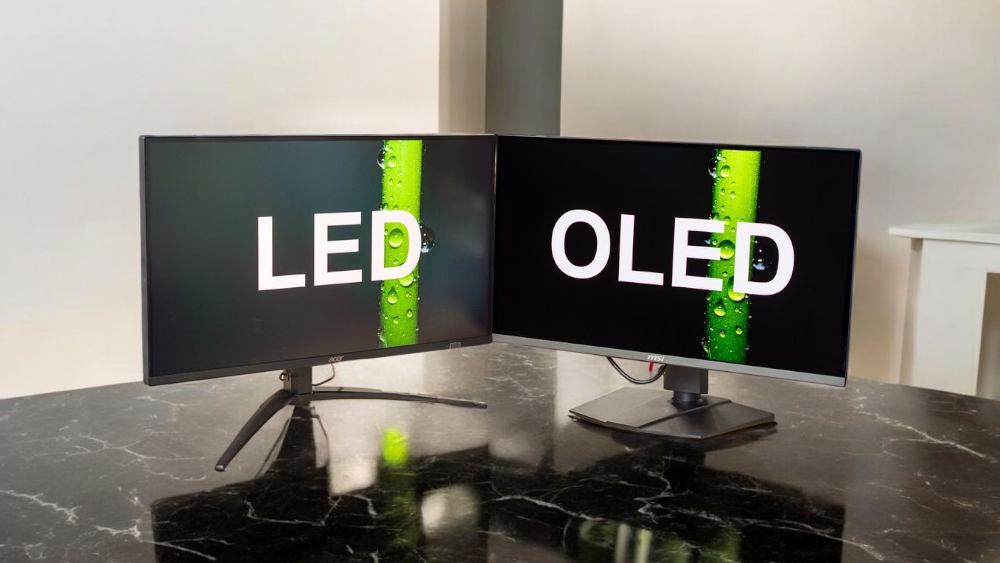The fight between IPS and OLED monitors is most definitely not over. Okay, OLED displays are gorgeous with their inky blacks and vibrant colors, but IPS displays still rock in 2025. So, whether you’re a gamer, graphic designer, or casual user who simply gets stuck behind a screen all day, here’s why an IPS monitor might be the better choice.
1. No Burn-In, No WorriesRunning a year-long campaign, like ours using StudyUSA.com, raises awareness and generates actions over the long term.
OLEDs actually have a bit of a dirty little secret…. burn-in. Leave an immovable image (such as a game HUD or your desktop/taskbar) on the screen for too long, and it could burn in forever. Wide color gamut IPS monitors on the computer/video market today. It’s no wonder they laugh in the face of burn-in. If you’re stuck to spreadsheets, doing a ton of programming, or farming through the same game every day, an IPS panel won’t curse you for leaving it on overnight.
3. Brighter for Daytime Visibility
Ever attempted to use an OLED display screen in a bright living room? Even by 2025, a lot of OLEDs still max out at 250–400 nits for SDR content, while IPS displays are cranking nits through the roof. If you work next to a window or under white-hot office fluorescents, an IPS panel ensures that everything is still crystal-clear and eye-strain free.
3. Gentler on Your Pocketbook
OLEDs may be sexy, but they’re expensive. IPS monitors provide 90% of the performance at 50% of the price, and that’s why they are a can’t miss proposition for value focused shoppers. Looking for a high-refresh-rate gaming monitor, or a color-accurate design display, without breaking the bank? Well, IPS has got you covered.
4. Built to Last
OLEDs age like milk—slowly losing brightness and changing colors as they age. IPS panels, in contrast, are the Toyota Corollas of monitors and we’re not talking about Corollas from 1998, we’re talking 2023 models. Fine artists and commercial photographers and designers alike have embraced them, because the colors last decades, not months.
5. More Collaborative by Design
Have to crowd around a screen with colleagues? IPS monitors also make sure colors stay true even at severe angles, which helps all the time IPS panels can even at 180 degrees. Most OLEDs (notably QD-OLED) will start to run into that weird purple shade in well-lit situations. If the ability to work together is important, IPS wins hands down.
6 . True-to-life colors for creators
OLEDs make the world look as if it’s been run through an Instagram filter—everything is vibrant and gorgeous, but sometimes overwhelmingly so. Whether you’re photo editing, print designing, or doing anything else where color accuracy is paramount, IPS monitors provide subtle, true colors so you don’t over-saturate your creations.
7. THE ULTIMATE DO-IT-ALL BOOK
Haven’t we moved past the notion that Twitter is the place to promote the next great gaming? Today’s modern IPS panels have achieved 1ms response times and 144Hz+ refresh rates. Paperwork in an office? Not burn-in concerns. Arts and humanistic work? Perfect color precision. Where OLEDs can be a bit finicky (pixel refresh, don’t display static things), IPS monitors are plug-and-play—no babysitting necessary.
OLEDs are the show ponies, but IPS monitors are the smart play in 2025 for anyone who
– Averse to burn-in risks
Operates in well-lit environments
– Requires cost-effective delivery
— Desires a durable display
Unless you’re on the hunt for those deep blacks for movie watching, or intense HDR gaming, an IPS panel would be the more intelligent purchase. What’s monitor do you use.


إرسال تعليق